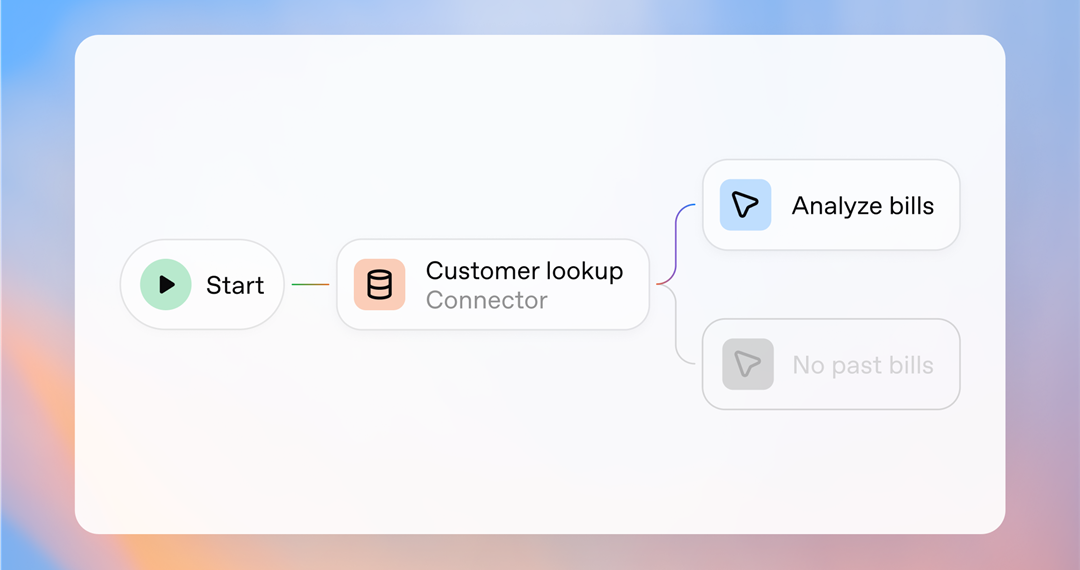Following our insights on “Digital Marketing Strategies for Business Growth” in the previous blog, we now turn our attention to one of the cornerstones of a successful online strategy: creating engaging and shareable content.
Let’s check two simple examples
Example One: Imagine scrolling through an article titled “Benefits of Water”. The content dryly states, “Water is essential for survival. It hydrates. It’s found in rivers and oceans.” You’d scroll past without a second thought, wouldn’t you?
Example Two: Now, imagine an engaging video clip showcasing people’s reactions as they taste water after a vigorous workout, titled “The Life-Changing Power of H2O!”. Intriguing? Share-worthy? Absolutely.
The difference? One merely states facts, while the other engages, excites, and evokes a reaction. That’s the power of quality content. Let’s check how you can achieve this transformation!
1. How Can I Create Engaging Online Content?
Engaging online content is the cornerstone of building a loyal audience. Here are some strategies to create content that captivates:
- Understanding Your Audience: Understanding your target audience’s preferences, interests, and pain points is crucial. Tailor your content to their needs to ensure it resonates.
- Interactivity: Engage users with quizzes, interactive infographics, or dynamic videos. It boosts user involvement and creates memorable experiences.
- Value-Driven Content: Before penning any content, ask, “What’s in it for the audience?” High-quality, informative content that offers solutions or new knowledge is always appreciated. Answer your audience’s burning questions, offer solutions, or provide unique insights that they can’t find elsewhere.
- Storytelling: Narratives have the power to hook readers. Weave a compelling story around your content, ensuring it is relatable and memorable.

Example:
Imagine you run a fitness blog targeting millennials. Instead of just sharing workout routines, tell the story of a person’s fitness journey, complete with before-and-after photos and testimonials. This narrative approach is more likely to engage your audience.
2. What Makes Content Shareable?
Creating shareable content is the key to organic reach. Here are content sharing tips that encourage people to hit that “share” button:
- Valuable information: Valuable information is the backbone of shareable content. This goes beyond just providing facts; it’s about delivering insights and practical knowledge that your audience can apply in their lives or work. When people find your content genuinely valuable, they’re more likely to share it because they want to help others by passing on this knowledge.
- Emotional Appeal: Emotions are a powerful driver of human behavior, including sharing content. Content that elicits strong emotions, such as joy, surprise, anger, or nostalgia, tends to go viral because it sparks a reaction. People share emotionally resonant content to express themselves, connect with others who feel the same way, or simply to brighten someone’s day.
- Easy Sharing Options: Facilitating the sharing process is essential for increasing the likelihood that your content gets shared. If sharing your content is cumbersome or requires too many steps, people may abandon the idea altogether. Ensure that your content is easy to share across various platforms and devices, making it convenient for your audience to spread the word.

Example:
Imagine you have an e-commerce store selling eco-friendly products. Sharing a heartwarming story about how your products contributed to a sustainable community project can evoke emotions and encourage shares.
3. Why Is Online Content Important for Success?
Online success hinges on visibility, engagement, and conversion. High-quality content drives these metrics. It establishes credibility, fosters trust, and turns casual browsers into loyal followers or customers.
- Establishing Authority: Regularly publishing high-quality content in your niche establishes your brand as an authority. It builds trust with your audience, leading to increased credibility.
- Wider Audience Reach: Online content can reach a global audience, allowing you to connect with a diverse group of people and expand your brand’s reach far beyond geographic boundaries.
- Enhancing SEO: Creating SEO-friendly content by strategically incorporating relevant keywords and optimizing meta tags helps improve your website’s visibility in search engine results, driving organic traffic.
Example:
Imagine you’re a startup in the tech industry. By consistently publishing informative articles on emerging technologies, you not only position your company as an industry authority but also attract potential investors, partners, and tech enthusiasts interested in your niche.
4. What Are Effective Content Marketing Strategies?
A well-structured content marketing strategy is essential to maximize the impact of your content:
- Content Calendar Planning: Develop a content calendar that outlines your content creation and distribution schedule. This approach ensures consistency and keeps your content relevant.
- Content Optimization: Optimize your content for search engines by conducting thorough keyword research and integrating relevant keywords naturally into your content. Pay attention to on-page SEO elements like meta tags, headings, and alt text.
- Strategic Content Promotion: Leverage social media platforms, email marketing campaigns, and partnerships with influencers or other brands to promote your content effectively.
Example:
Suppose you run a travel agency. Creating an engaging content calendar that aligns with seasonal travel trends and holidays allows you to produce timely and relevant articles. Optimizing your blog posts with keywords like “best summer travel destinations” and actively promoting these articles on social media can significantly increase your reach and bookings during peak travel seasons.
5. How Can I Improve Social Media Engagement?
Effective social media engagement is critical for amplifying your content’s reach. Here are strategies for enhancing your social media presence:
- Consistent Posting Schedule: Maintain a regular posting schedule to keep your audience engaged and informed about your content updates.
- Emphasize Visual Content: Visual content, such as images, videos, infographics, and interactive visuals, tends to perform better on social media platforms.
- Actively Engage with Your Audience: Respond to comments, messages, and mentions promptly. Building a sense of community and interaction around your brand fosters engagement.
Example:
If you manage a fashion brand’s Instagram account, regularly posting high-quality photos of your products in different settings can captivate your audience. Additionally, engaging with your followers by asking questions in captions or stories encourages interaction and strengthens the connection between your brand and your audience.
6. Are There Tips for Creating Viral Content?
Here are some viral content techniques you can consider:
- Timeliness and Trend Riding։ Stay updated on current trends, events, and viral topics within your niche. Create content that’s relevant to these trends to ride the wave of viral interest.
- Unique Angle and Creativity։ Present information in a fresh, unexpected way that piques curiosity. Don’t be afraid to take creative risks and think outside the box.
Example:
Suppose you run a food blog. Creating a unique recipe that incorporates a trending ingredient and presenting it with visually stunning photography can increase the likelihood of your content going viral. Additionally, you can leverage trending hashtags and engage with influencers in the food industry to amplify your content’s reach.
7. What Are User Engagement Strategies?
Engaging your audience is vital for retaining and growing your online community:
- Interactive Content Formats։ Incorporate interactive elements such as polls, quizzes, surveys, and contests into your content. These encourage participation and keep your audience engaged.
- Encourage User-Generated Content։ Ask for user-generated content, reviews, testimonials, and feedback to involve your audience in your content creation process.
Example:
Suppose you manage an online community for gamers. Organizing gaming challenges with enticing prizes can boost engagement as gamers compete and share their experiences. Encouraging members to share their gaming stories, tips, and strategies within the community can create a thriving hub for gaming enthusiasts.
8. How Should I Promote My Content Online?
Effective content promotion is as important as content creation:
- Use Social Sharing։ Leverage social media platforms to share your content. Craft attention-grabbing captions and use relevant hashtags to increase discoverability.
- Harness the Power of Email Marketing։ Build and nurture an email list. Send newsletters, content updates, and personalized recommendations to keep subscribers engaged and informed.
- Paid Advertising: Use pay-per-click (PPC) ads, sponsored posts, or social media advertisements to push your content to a broader audience or to a very targeted group based on demographics and interests.
- Collaborate with Influencers: Identify and collaborate with industry influencers who can amplify your content’s reach.
- Guest Blogging: Write for reputable sites in your industry. Not only does this provide backlinks, but it also introduces your content to a broader audience.
Example:
Imagine you’re a beauty influencer launching a new makeup tutorial video. You can promote it by creating eye-catching visuals and captions for Instagram, sharing teaser clips on TikTok, and sending a newsletter to your email subscribers with a direct link to the video. This multi-channel approach maximizes your content’s exposure and engagement potential.
9. What Metrics Should I Monitor for Audience Engagement?
Measuring audience engagement is vital for refining your content strategy and optimizing your efforts:
Click-Through Rate (CTR): Click-Through Rate (CTR) measures the effectiveness of your content in encouraging users to take action, typically associated with calls to action (CTAs) and hyperlinks within your content.
Time-on-page: Time-on-Page measures the average amount of time users spend on a specific page or piece of content. Longer time-on-page suggests that users find your content engaging and relevant, indicating a higher level of interest. Compare time-on-page across different pieces of content to pinpoint which topics or formats hold users’ attention the longest.
Bounce Rate: Bounce Rate measures the percentage of users who visit a single page on your website and then leave without interacting further. A high bounce rate may indicate that users did not find your content engaging or relevant, prompting them to exit quickly. Identify pages with high bounce rates and assess their content quality and relevance.
Social Engagement Metrics: Social engagement metrics include likes, shares, comments, and followers/fans on social media platforms. These metrics reflect how well your content resonates with your social media audience and how engaged they are with your brand.
Conversion Rate: Conversion Rate measures the percentage of users who take a desired action, such as making a purchase, signing up for a newsletter, or filling out a contact form.
Digi-Tip: Test different CTAs, landing page designs, and content formats to improve conversion rates.
10. What Are the Latest Content Trends Online?
Staying up-to-date with the online content trends is essential to remain relevant and competitive in the ever-evolving digital landscape. Here are some of the latest content trends that are shaping online success:
- Video Continues to Thrive: Video content remains a dominant force in online media. Short-form videos, live streams, and interactive video formats are particularly popular.
- Short-Form Content Takes Center Stage: Short-form content, including micro-videos, stories, and snackable content, is on the rise, driven by platforms like Instagram Reels and TikTok.
- User-Generated Content Gains Momentum: Brands are increasingly leveraging user-generated content (UGC) to build trust and authenticity. UGC includes customer reviews, social media mentions, and content created by fans.
- Interactive Content Formats Thrive: Interactive content, such as quizzes, polls, surveys, and interactive infographics, is gaining popularity as it actively engages users.
- Voice Search Optimization: With the rise of voice-activated devices and virtual assistants, optimizing content for voice search is becoming crucial.
Digi-Tip: Research and implement voice-friendly keywords and create content that answers common voice search queries.
By applying these strategies and staying attuned to the latest trends, you can create content that not only engages your audience but also drives meaningful results. So, whether you’re a blogger, marketer, or business owner, harness the power of engaging and shareable content to thrive in the ever-evolving online landscape.
Your journey to online success begins with the content you create. Keep a finger on the pulse of industry developments to remain innovative and relevant to your audience and double-check the blog to improve your content writing approach.




